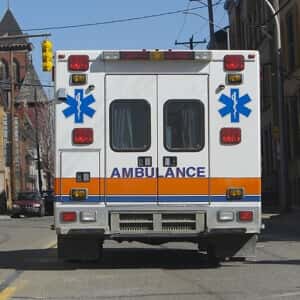
Dehydration is a serious health problem that can become much worse at this time of year. That’s because hot humid weather and intense exertion can team up to deplete our bodies of both fluids and minerals.
Whenever fluid out is greater than fluid in, there is a risk of upsetting the balance of water and electrolytes. Vomiting or diarrhea can quickly trigger dehydration. So can a fever or uncontrolled diabetes.
Susceptibility Increases with Age
Older people are especially vulnerable. They may drink less, especially later in the day, for fear of having to get up at night to urinate. Even healthy elderly people don’t get thirsty as readily as younger folks. In addition, their kidneys don’t work as efficiently (New England Journal of Medicine, Sep. 20, 1984).
Medication Risks
Some medications also increase fluid loss. Many blood pressure pills work by driving water out of the body’s plumbing, its veins, arteries and capillaries. Although that can lower blood pressure, it can also increase the possibility of becoming dehydrated. Anyone taking diuretics such as furosemide (Lasix), hydrochlorothiazide (HCTZ) or chlorthalidone should make an extra effort to consume adequate water.
Symptoms to Watch For
It’s also smart to be alert for symptoms of dehydration: dry mouth, thirst, fatigue, dizziness, heart palpitations, weakness, confusion or dark colored urine.
Antibiotics or laxatives can also pose a problem if they lead to diarrhea. One reader wrote:
“My 84-year-old mother read about the benefits of aloe for detoxification and thought she should try it. She took it faithfully and over a period of time got a bad case of diarrhea. She didn’t tell her doctor about this condition until she was hospitalized with dehydration.”
Treating Dehydration
For years people were told simply to drink water to rehydrate. That is not always the best strategy, especially for serious athletes or people suffering from diarrhea.
The trouble is that plain water contains no electrolytes. This can lead to a sodium deficit. Although we have been admonished to keep salt intake low, there are times when salt is essential.
Too little sodium, called hyponatremia by doctors, can be life threatening. One reader shared the following scary experience:
“I was rushed to the emergency room a few weeks ago because of low sodium. I have always been careful to eat a healthy diet low in salt. I’ve also made it a habit to drink a lot of water to stay well hydrated.
“As a consequence of my fluid intake and low-sodium diet, I actually ended up with hyponatremia. The doctor advised me not to drink too much water because it can lead to an imbalance of electrolytes.”
Most people can drink reasonable amounts of plain water without getting into trouble, but there are times when an electrolyte-fortified beverage can be helpful. Although sports drinks are popular, they often contain extra sugar and artificial colors and flavors.
Pedialyte Becoming Popular with Adult Athletes
An alternate beverage is Pedialyte. Developed originally for sick children suffering from gastroenteritis, this rehydration liquid has become popular with athletes. The unflavored version has a good balance of sodium, potassium, chloride and zinc without unwanted colors or flavors.
As the temperature climbs, be sure to stay well hydrated and drink enough to keep urine pale. If urine becomes darker, that is a sign to increase fluid intake.

